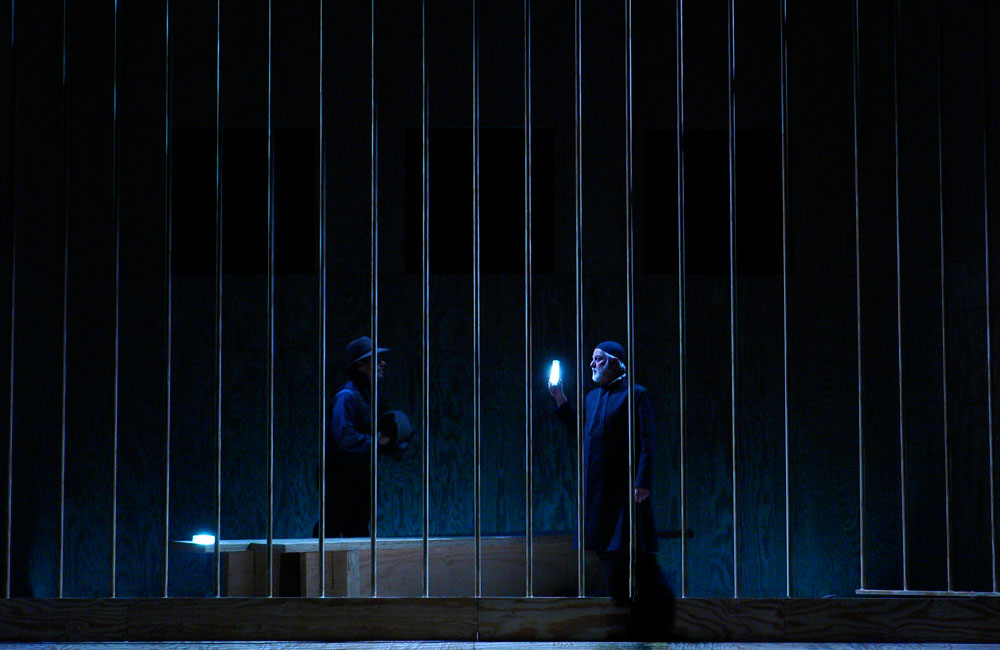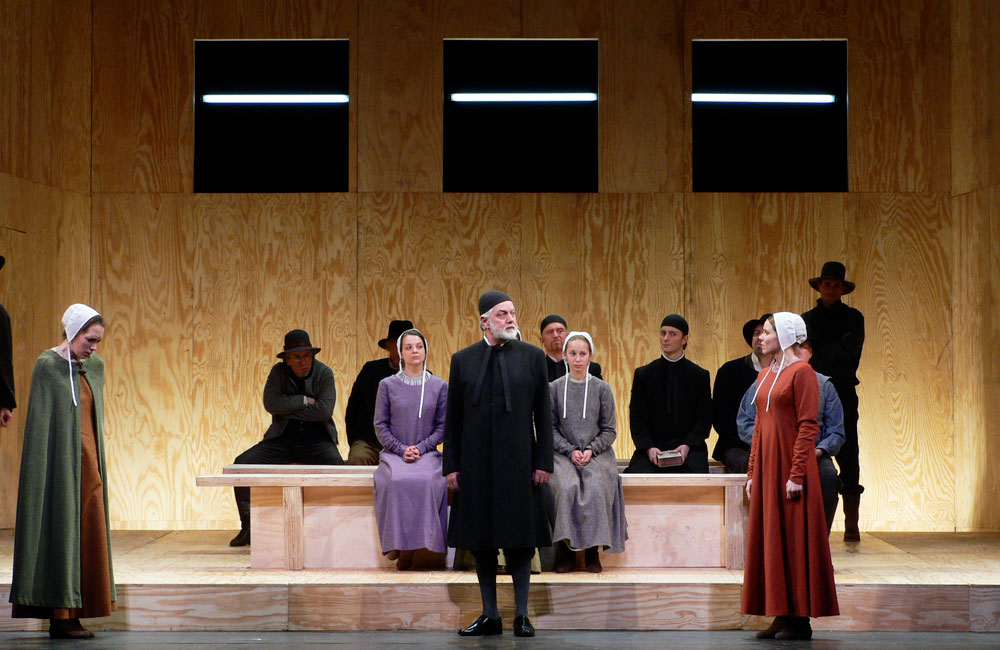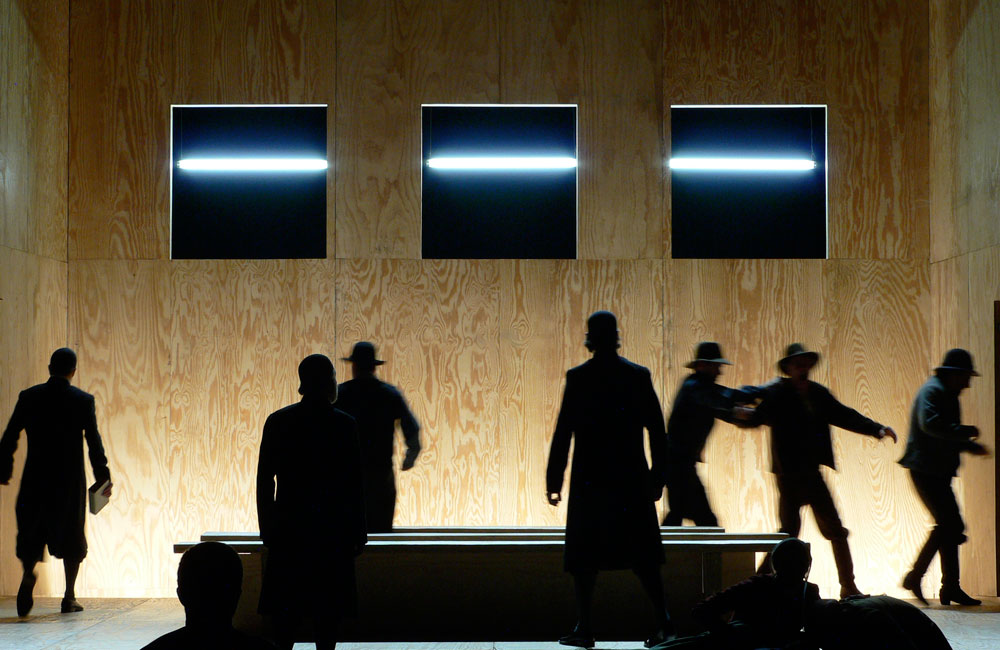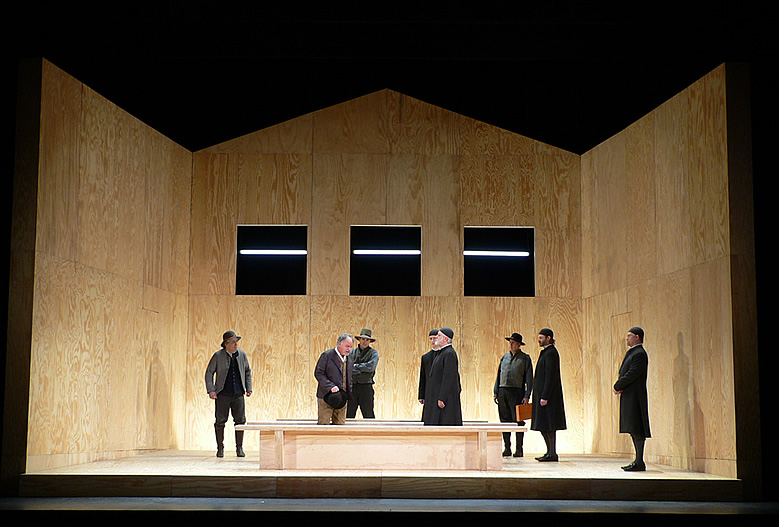THE CRUCIBLE
Set Design: Narelle Sissons | Lighting Design: Rick Martin
Costume Design: Kim Krumm Sorenson | Sound Design: Fitz Patton
Scroll down to read Drew's director's note for The Crucible at Great Lakes Theater and Idaho Shakespeare Festival.
The Crucible by Arthur Miller | Director's Note
At age 14, Arthur Miller bought a load of lumber using money he had earned delivering bread and built a back porch onto his family home. It was his first experience with “the fevers of construction,” and it stimulated a life-long passion for carpentry that enabled the playwright to construct things that he and his family needed. A back porch. A dining room table. A writing desk. After that experience, he wrote in his autobiography Timebends, “the idea of creating a new shadow on the earth has never lost its fascination.”
In a ten-by-twelve-foot freestanding studio that he erected outside his country home, Miller wrote a play that would cast one of the largest and most haunting shadows of his career: The Crucible. Combining a deeply personalized exploration of the individual’s role in society with painstaking historical research, Miller fashioned that rarest of entities: a historical play that speaks fervently to a contemporary audience. The Crucible avoids the pit falls of history lesson or rudimentary civics allegory. It engages us in a vibrantly ageless debate, manifested by characters who must internalize their society’s values and try to reconcile them with their own private needs.
Though he established himself in the middle of the 20th century as America’s next great dramatist, later years proved somewhat diminishing to Miller’s reputation in his own country. His detractors called him a stodgy realist, lumping his plays with other mid-century American domestic dramas that are at best appreciated for their purposeful, if old-fashioned, sentimentality. In a sense, these critics were likening Miller’s plays to his handmade furniture, focusing on their sturdy structure and high-minded functionality. Miller, it would seem, identifies the source of society’s problem and claims to have the tools at his disposal to construct the solution.
But to work on an Arthur Miller play is to come to know the artist as well as the craftsman. “Miller the Realist” gives way to “Miller the Poet,” a man of the theater who recognizes the stage as a place of abstraction and wonder. His plays enlist the singular power of that most miraculous of tools, the human imagination, to give physical form and expression to the deepest questions of human psychology. Nowhere is that imagination more visible than in the Salem of Miller’s creation – an assemblage of private lives, public record, and period details – where witches are crafted out of fear and people are taught to doubt what they know and question what they perceive to be real.
It is important to remember that Miller’s Salem exists neither in the 1692 of its setting nor in the 1950s America of its creation. It exists here and now in the hearts and minds of the actors and the audience; it was conceived by a man profoundly engaged in the fundamental questions of what it means to be an individual in a social group. Where does one’s ultimate responsibility lay: with the self ? The family? A country? What happens when we confront the essential differences between us, when we discover that my reality is not yours? How can we live a moral life when we cannot even agree on the parameters of the Real? These are ideas that precede and surpass tools of construction.
These are ideas that don’t go out of style. They still have the power to shock us with their relevance. They are foundational and sturdy, casting a shadow on the earth that is undiminished after more than half a century.
-Drew Barr







